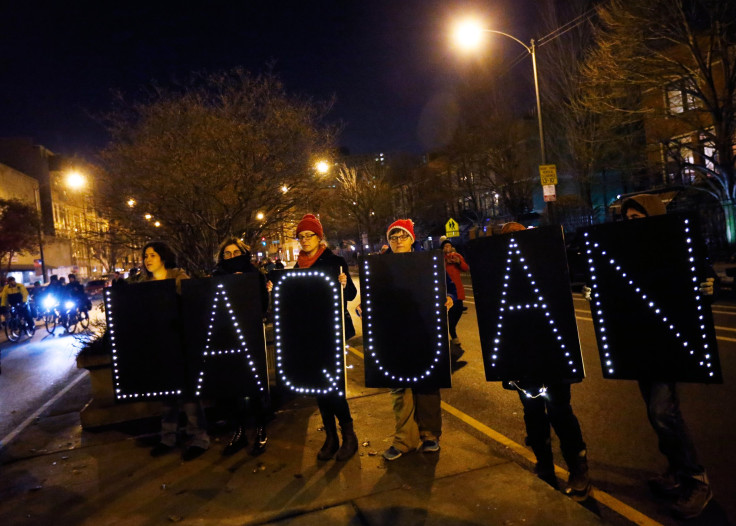Police Shootings In US: Laquan McDonald Case Leads To 3 Chicago Officers Being Charged With Felony

Three Chicago police officers were indicted Tuesday for the alleged cover-up of fatal shooting of a 17-year-old black boy, Laquan McDonald, by a white police officer in 2014.
Former detective David March, and patrol officers Joseph Walsh and Thomas Gaffney were charged with felony counts of official misconduct, conspiracy and obstruction of justice, according to the indictment, Chicago Tribune reported. The indictment stated the three officers lied about the event on Oct. 20, 2014 when Officer Jason Van Dyke shot the black teen 16 times. McDonald’s death triggered widespread protests across Chicago.
Read: Why Is There Police Brutality? Shootings Of Black Men Compared to Lynching, Slavery: UN
“The indictment makes clear that these defendants did more than merely obey an unofficial 'code of silence,' rather it alleges that they lied about what occurred to prevent independent criminal investigators from learning the truth,” Special Prosecutor Patricia Brown Holmes, who was appointed last July to investigate the shooting, said in a statement Tuesday, according to the Washington Post.
“The co-conspirators created police reports in the critical early hours and days following the killing of Laquan McDonald that contained important false information,” the indictment stated. It also mentioned the three officers allegedly falsified information surrounding the shooting in order “to shield their fellow officer from criminal investigation.”
Van Dyke pleaded not guilty after he was charged with first-degree murder in 2015. A dashcam footage released the same year clearly showed Van Dyke fatally shooting the victim 16 times as he moved away from them. However, the police accounts gave a contradictory story about the incident. “The defendants allegedly lied about what occurred and mischaracterized the video recordings so that independent criminal investigators would not learn the truth about the killing and the public would not see the video recordings,” Holmes said.
Read: Police Killings By Race: White, Black, Hispanic Cops Divided Over Shootings, Inequality, Polls Show
March, the lead detective, left the department soon after the city’s Inspector General Joseph Ferguson released a report in 2015 of his false statements about the killing. Walsh was fired from the Chicago Police Department. Authorities released the dashcam footage in November 2015 after Mayor Rahm Emanuel's administration reportedly tried to contain the video for a year, before an Illinois judge ordered the release, according to WGN-TV in Chicago.
Chicago officials said the release of the video would violate a federal probe into the shooting, a report published by Chicago Tribune in 2015 said. However, the judge dismissed the claim and said the authorities could not come up with evidence that the probe would be harmed due to the release of the video. The delay in the release sparked outrage all over the city and protests were also carried out against the mayor's administration.
Police killings have seen a rise in the last few years. A similar incident occurred in October when New York Police Department Sgt. Hugh Barry fatally shot a mentally ill black woman named Deborah Danner inside her apartment in Castle Hill neighborhood in Bronx. Barry was charged with murder on May 31. Similarly, in January, an unarmed man was shot and killed by an off-duty police officer in Chicago.
Statistics maintained in a national database tracking the deaths caused by police shootings underline more people have been killed in 2017 as compared to the number of deaths reported in the last three years. At least 181 people were killed by police till Feb. 20, compared to 162 deaths reported in 2016, 154 in 2015 and 126 in 2014, according to the Killed By Police database. Most killings by police forces involved use of personal service weapons, including Tasers; while some of the killings involved usage of official vehicles to kill the suspects.
© Copyright IBTimes 2024. All rights reserved.












